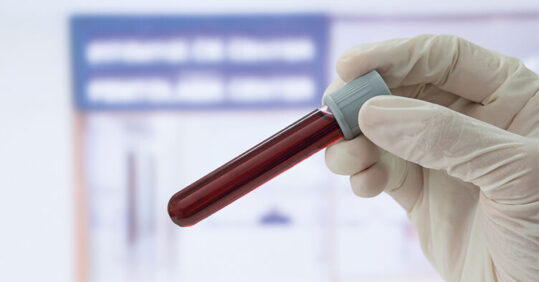Research update: Communication breakdown over blood tests, and GP work in A&E

Lucille Kelsall-Knight summarises two recent qualitative studies investigating the uncertainties around patients accessing their blood test results, and the attitudes and motivations of GPs who choose to work in emergency departments
‘I guess I’ll wait to hear’– communication of blood test results in primary care: a qualitative study
In the UK, more blood tests are being conducted in primary care.1 The results are important for diagnosis and monitoring, and communication of the results is vital to reassure the patient or to inform their care.2
Related Article: Research update: Social factors in remote consulting and antibiotic prescribing
Watson and colleagues (2022) set out to explore GPs’ and patients’ experiences of systems of communicating test results. 3 A total of 28 patients and 19 GPs from six practices in the west of England were recruited, with a range of socioeconomic and demographic characteristics. The researchers undertook 80 semi-structured interviews – 54 with patients and 26 with GPs – between March 2019 and March 2020. Most patients were interviewed at two time points: first, at the time of or soon after their blood test, and then again after they had received their results. The GPs who requested the tests were also interviewed, some twice.
Thematic analysis of the interview transcripts highlighted that test result communication varied between doctors and was based on habits and personal preferences rather than on protocols. While there was an expectation among GPs that patients would know how to access their test results, the patients were often uncertain and used guesswork to decide when and how to access their results. Each party often assumed the other would make contact. It was also found that while text messaging and online contact have benefits, some patients found them to be ‘flippant’ or ‘confusing’. Delays or difficulties in obtaining or interpreting test results led to anxiety and frustration for the patients.
A limitation of the study was that the interviews were based on recollection of the healthcare encounters, rather than direct observation of the GP-patient interactions. However, it highlights that current systems for communicating blood test results can be complex and confusing, and are predominantly based on habit rather than protocols. This has important implications for patient safety and patient-centred care.
References
- O’Sullivan J et al. Temporal trends in use of tests in UK primary care, 2000-15: retrospective analysis of 250 million tests. BMJ 2019;364:l444. Link
- Callen J et al. (2012) Failure to follow up test results for ambulatory patients: a systematic review. J Gen Intern Med 2012;27(10):1334–1348. Link
- Watson J et al. (2022) ‘I guess I’ll wait to hear’— communication of blood test results in primary care a qualitative study. BJGP 2022.0069. Link
Perspectives of practices working in or alongside accident and emergency departments in England
Accident and emergency departments are facing increasing pressure internationally1, yet data suggest 43% of attendances could have been managed in general practice.2 Policies have been developed in England that support diverting appropriate patients to GPs working in or alongside accident and emergency departments (GP ED).3 Evidence is limited but this is expected to improve flow and reduce crowding.4 However, nurses in primary care may experience extra pressure if GPs are diverted away from an already overstretched service.
Related Article: How to develop a strong patient safety culture
Anderson and colleagues explored the motivations and experiences of GPs choosing to work in GP ED services in England.5 They undertook semi-structured interviews with 39 GPs at the start, middle and end of the study, between October 2017 and December 2019. The authors chose services that had been established for different periods so as to capture a range of experiences.
Analysis of the results threw up four themes: the ‘pull’ of a portfolio career; the ‘push’ of disillusionment with general practice; professional reciprocity; and the sustainability of GP ED and core general practice.
GP ED was seen as attractive due to its flexible nature, collaborative working and opportunities for professional development. However, disillusionment with core practice was a key driver of GPs’ decision to work there.
A limitation of the study was that the motivations for taking on GP ED roles at the study sites and in the current environment may not apply to other models of GP ED, or to other time points. The study shows that it is a way for experienced GPs to broaden their scope of practice and could help with retention. However, attracting GPs to such ‘portfolio’ opportunities amid a recruitment crisis may hit core general practice, putting more strain on their GP and nursing colleagues – an important consideration due to staffing shortages.
References
Related Article: How to become… a nurse researcher
- Cowling T et al. Access to general practice and visits to accident and emergency departments in England. BJGP 2014;64(624):e434-e439. Link
- Cooper A et al. (2019) The impact of general practitioners working in or alongside emergency departments. BMJ Open 2019;9:e024501. Link
- NHS England (2017) Next steps on the NHS five year forward view. Link
- Cooper A et al. Is streaming patients in emergency departments to primary care services effective and safe? BMJ 2020;368:m462.
- Anderson H et al. Perspectives of GPs working in or alongside emergency departments in England. BJGP.2021.0713. Link
Lucille Kelsall-Knight is a lecturer in children’s nursing at University of Birmingham School of Nursing

See how our symptom tool can help you make better sense of patient presentations
Click here to search a symptom

